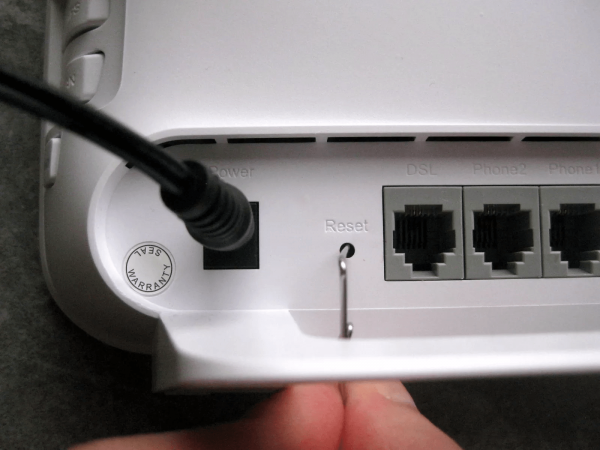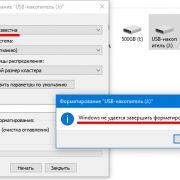Программа для определения загруженности каналов беспроводной сети wifi analyzer
Содержание:
- How to Perform WiFi Analysis Using a WiFi Analyzer App?
- What Does a WiFi Analyzer Do?
- Что делать, если качество сигнала осталось прежним
- Пример анализа сети
- Анализатор для Android
- Common WiFi Performance Issues
- Wi-Fi Analyzer для Windows 10
- Программы wifi анализаторы
- The best wifi analyzer apps for iOS
- What Does High-Performing WiFi Look Like?
- NetSpot
- The best wifi analyzers for Linux
- What Is WiFi Analysis?
- Что нужно для того, чтобы выбрать наилучший канал?
- Wifi Heatmap
How to Perform WiFi Analysis Using a WiFi Analyzer App?
WiFi analysis may sound very technical and daunting, but it’s anything but that — as long as you use a simple yet capable WiFi analyzer app like NetSpot. In addition to NetSpot, you’ll also need a laptop with a WiFi card so you can detect nearby WiFi networks.
With NetSpot, you can choose between two distinct WiFi analysis methods. The first method, called Discover Mode, is all about quick and easy WiFi network discovery, instantly listing all WiFi networks available in your area, along with all important information about them, including network name, band and channel, security settings, WiFi standard, signal strength, and noise level.
The second WiFi analysis mode is called Survey Mode, and it allows you to perform a WiFi site survey and create a WiFi heatmap so you can see exactly where your WiFi signal is strong and where it could use some improvement.
By combining these two WiFi analysis methods, you can get a very accurate idea about the performance of your WiFi network and understand exactly what you need to do to improve it. For example, it takes just one click to see which WiFi channels nearby WiFi networks broadcast on, which makes it straightforward to solve channel interference issues.
What Does a WiFi Analyzer Do?
The purpose of a WiFi analyzer is to gather as much information as possible about available wireless networks to help professionals and home users alike troubleshoot WiFi-related problems, ensure optimal router placement, and more.
In the past, WiFi analyzers were used predominantly by large organizations and enterprises that needed to cover a large area with a strong WiFi signal. These days, WiFi networks are everywhere, and our expectations of them have never been greater.
Without knowing how to use a WiFi analyzer, it’s very difficult for home users, small businesses, and schools to provide reliable coverage and the best data transfer speeds possible. The good news is that WiFi analyzers have become readily available at a variety of price points, and they can be roughly divided into two categories:
- Hardware WiFi signal analyzers: Aimed at professional network administrators and security experts, hardware WiFi signal analyzers are physical devices used for troubleshooting and performance testing. They often have an external directional antenna that lets them discover and analyze remote networks. Some hardware wireless analyzers are self-contained and don’t need to be connected to a computer to function as intended. In virtually all cases, the cost of hardware wireless analyzers starts at hundreds of dollars and goes up to thousands.
- WiFi Analyzer apps: For home users and small businesses, it doesn’t make financial sense to spend money on an expensive hardware wireless analyzer because they can simply download one of the best WiFi analyzer apps and perform WiFi analysis using a laptop, smartphone, or tablet. WiFi analyzer apps are affordable, easy to use, and the information they provide are accurate enough to satisfy the needs of most users.
Of course, not all hardware WiFi signal analyzers and WiFi analyzer apps are created equal, which is why it’s important to know what the best WiFi analyzers are and avoid those that don’t perform well.
Что делать, если качество сигнала осталось прежним
Если все настройки были установлены верно, но интернет от маршрутизатора все еще достаточно слаб, то следует попробовать следующее:
- Установить свой роутер немного дальше от стены. Это не только может убрать ряд надоевших помех, но и улучшить качество и покрытие сигнала. Причиной помех также становится любая техника, работающая в данный момент в квартире.
- Перемещать маршрутизатор по дому до тех пор, пока не будет найдено идеальное местоположение, дающее наиболее качественный вай-фай сигнал и его скорость. Здесь также многое зависит от техники, находящейся в непосредственной близости к роутеру, а также толщине стен, не дающих сигналу нормально распространяться по всему дому.
Пример анализа сети
Анализ может производиться для разных целей. Например, для возобновления ширины канала между различными пользователями или для улучшения качества и скорости сигнала. В первом случае необходимо произвести анализ сети и определить по появившемуся графику зоны, в которых разные сети соприкасаются. В местах этих соприкосновений и возникают своего рода помехи, влияющие на качество и скорость вай-фая. Во втором случае необходимо запустить проверку и медленно ходить по квартире для лучшего определения точки, в которой видно лучший поиск и прием линии передачи. Если точка найдена, то можно перенести маршрутизатор в непосредственную близость к ней.
Таким образом, Wi-Fi Анализатор для Windows и Android — мощное и современное средство для анализа беспроводных сетей вай-фай, а также их каналов связи. Свою популярность этот софт получил за бесплатность и наличие широкого инструментария для сканирования своих и чужих сетей.
Анализатор для Android
Как уже говорилось, подобный софт доступен и на смартфон под управлением Андроид ОС (на iPhone нет). Сам анализатор не должен доставить никаких проблем ни при загрузке apk файла онлайн с официального источника в «Гугл Плей», ни при установке. После инсталляции его нужно просто открыть и начать проверку. По ее истечению произойдет вывод результатов с данными о том, насколько активно данная сеть применяется в данном местоположении, насколько часто включается роутер. Все это доступно во вкладке свойств и каналов.
Если графики практически не пересекаются, то значит, что домашней сети практически не мешает ни одно соседское подключение. Помимо этой информации, можно узнать и то, насколько силен такой сигнал
Важно! Сканер Wi-Fi Analyzer — одна из самых полезных программ подобного плана для телефонов. Основное преимущество заключается в очень маленьком объеме занимаемой софтом памяти на SD-карте, так как память используется только при работе в режиме online
Также в интерфейсе есть возможность выбрать русский язык.
Common WiFi Performance Issues
Even though the performance of the average WiFi network has improved significantly during the last decade, there are still many WiFi performance issues that plague users every single day:
- Slow connection: There are many factors that can cause WiFi to be slow, including limited bandwidth, poor coverage, insufficient speed provided by the ISP, or signal interference caused by nearby appliances and Bluetooth devices. To fix issues with a slow WiFi connection, you should first determine whether you’re receiving a sufficiently strong signal from your router. You can easily do that with the help of a wireless network analyzer app. The best WiFi analyzer apps can even create a signal heatmap, clearly visualizing where the signal is sufficiently strong, and where it leaves something to be desired.
- No internet connection: Whenever your WiFi connection stops working, you should first check if your WiFi router is operating as it should. If you see an LED indicator light flashing, telling you that the router itself can’t connect to the internet, then your ISP might be to blame. But if the router is working fine and your ISP isn’t experiencing an outage, then you need to fix the problem yourself. First, restart the router and wait a few minutes to see if this solves the problem. If it doesn’t, establish a wired connection and see if you can connect to the internet that way. If you can, log in to the admin interface and check your WiFi settings.
- Unreliable performance: Does your WiFi connection often go from flawless to aggravating? Then you should know that you’re not the only one who’s experiencing issues with unreliable WiFi performance. Such issues are common because they are caused by a number of different factors, including co-channel interference, network overload, and spotty coverage. Many of these issues can be fixed by purchasing a new router, one that supports 2.4 and 5 GHz bands and technologies like MU-MIMO and beamforming. Other issues that can cause unreliable performance require careful troubleshooting using a wireless network analyzer.
- Signal weak spots: Ideally, you want to see full WiFi signal strength bars on your laptop and mobile devices regardless of if you’re standing right next to your router or in the room that’s farthest away from it. Modern mesh WiFi systems make this possible, but you need to know how to use a WiFi analyzer to determine the optimum location of each node.
- WiFi speeds lagging behind wired internet: If you can achieve the maximum download and upload speeds advertised by your internet service provider when connected to your router using an Ethernet cable but struggle to achieve the same speeds when connected over WiFi, you most likely need to either improve your WiFi coverage or purchase a more capable router that supports the latest wireless networking standards, such as Wi-Fi 6.
- Insufficient bandwidth for multiple users: Not all WiFi networks can support multiple simultaneous users streaming online content, playing video games, or downloading large files from the web at the same time. For starters, you need a sufficiently capable router with enough processing power to serve multiple clients at the same time. The router should support Quality of Service to ensure that one person downloading a movie won’t make it impossible for everyone else to browse the web and send email messages. Technologies like MU-MIMO and beamforming can further enhance everyone’s experience.
Wi-Fi Analyzer для Windows 10
Когда происходит проверка на «Виндовс 10», то по ее итогу выводится окошко, которое сообщает, какое подключение является оптимальным для текущего местоположения пользователя. Такое же сообщение появляется и на телефонах.
«Аналайзер» предназначен для установки предпочтительно на 10 версию Windows. Если на компьютере, ноутбуке или планшете версия другая, то установка будет невозможной. Поэтому, если есть острая нужда в этом софте, то потребуется обновить систему до последней десятой версии.
Как видно на картинке, при сканировании оцениваются несколько показателей:
- Качество сигнала;
- Показатель восприимчивости приемника сети;
- Настройки сети;
- MAC-адрес текущей сети.
В зависимости от результата, под этими значками может появиться соответствующее сообщение в виде знака:
- Сеть не имеет доступа в интернет;
- Подключение не защищено;
- Слабая подача соединения;
- Выбран не самый лучший среди каналов.
Программы wifi анализаторы
Программных реализаций анализаторов не счесть. Тут отметились как известные софтописатели, так и специализированные конторы, некоторые из которых, вообще, производители железа как упомянутая выше Ubiquiti c их AirView. Все программы между собой отличаются немного интерфейсом и методом визуализации, делают примерно одно и то же и даже так же.
Некоторые отличия продиктованы целью сканирования, допустим, TamoGraph Site Survey ориентирован на размещение WiFi устройств по площади; InSSIDer — на анализ соединения доступных сетей в разрешенных диапазонах; а AirView существует чтоб облегчить жизнь настройщику Ubiquiti в диапазоне и за его пределами. Тем не менее наиболее на слуху из всего семейства, Wi-Fi analyzer, представленный утилитами для андроид и Виндовс устройств, потому как «я андроид, мне нужен интернет и розетка». Программа позволяет найти место, где никто и ничто не мешает просто осваивается и используется, при этом достаточна для домашнего использования.
Пример анализа wi-fi сети
Любой Анализ бессмыслен без цели. Это так отвлечённая мысль. Целью первого примера будет восстановление ширины канала между Васей и Петей. Канал настроен на оборудовании Ubiquiti, имеет для простоты всего две антенны. Обнаружив падение скорости, Вася заходит на 192.168.1.20 и видит там скажем «transmit ccq 50%». Матерясь на медленную связь, Вася качает JAWA и вот он, наконец, жмет большую синюю кнопку Launch AirView. С этого момента собственно и начинается анализ, которому, кстати, нужно дать поработать минут 10 для накопления статистики.
Большинство анализаторов выводят информацию в виде графиков, их много, но обычно они дублируют друг друга в той или иной мере. У Васи их три — кратковременный (мощность) отображает изменения последних минут работы, долговременный (мощность) отображающий шкалу от момента запуска сканирования и долговременный (энергия).
Пересчитав пики на графике «Waveform View» (долговременный график изменения мощности), Вася не только видит, что рядом по частоте появилось какое-то устройство, но и по глубине синего цвета обнаруживает на какие частоты можно сменить канал.
Второй задачей для примера будет задача найти андроиду канал шире. Запускаем Wi-Fi analyzer, смотрим рейтинг каналов для точки на вкладке «рейтинг каналов», получаем номера свободных каналов. Как-то не вышел пример. Возьмем для примера задачу найти более мощный сигнал точки. Запускаем Wi-Fi analyzer, включаем измеритель и смотрим, как меняются показания, когда ходим по комнате, кстати, если данные прибора привязать к координатам в процессе получим карту покрытия.
Wifi analyzer для android
Переносное устройство, применяемое в сложной радиообстановке, должно иметь средства анализа окружающего беспредела, просто обязано. Набрав Wifi analyzer, получим список позиций на 10, схожего функционала и реализации, ну я же говорил — место хлебное.
Выбрав удобную лично себе программу, иногда не понимаешь, как жил до ее установки. Оценить сеть, найти оптимальное местоположение, а за счет размера волны wifi связь зависит от положения и ориентации устройства. Да в конце концов, выбор точки подключения из возможных тоже анализ, зашитый в носителя телефона.
Wifi анализатор для Windows
Все размышления о переносном устройстве в силе, вот только в магазине выбор поменьше, цены побольше хотя Wi-Fi analyzer есть и даже также бесплатен. На просторах интернета встречается InSSIDer и многие, многие другие. Упоминавшийся выше TamoGraph Site Survey тоже из этой песочницы.
Не возлагайте надежд, это всего лишь утилита для «посмотреть глазами», увидев и исправив частоту канала, положение устройства и антенны можно иметь более стабильный контактик на более высокой скорости торрентов особенно, если отодвинуть сварочник от антенны.
The best wifi analyzer apps for iOS
The iOS operating system blocks access by apps to the wifi processes or network connection hardware. That presents a big problem for the designers of wireless packet sniffers. However, some valiant system software producers have taken a shot at producing wifi analyzers for iPhones and iPads. Check out the following options:
1. Network Analyzer
Network Analyzer does a good job of presenting network information within the constraints of the iOS operating system. The service is produced by Technet and is available in two versions. New users can only download and install the free editions, which is called Network Analyzer Lite.
The tool includes a Wi-Fi LAN scanner, which spots all network devices on a wireless network. The tool shows the roundtrip response time to each detected device, using Ping. It can also deliver the IP address of each device and show the device’s location with a flag icon. The scan can also tell you the cell network details of each device within range and other wireless network data.
Once you have Network Analyzer Lite installed on your iPhone or iPad, you have the option to upgrade to the full version. Network Analyzer shows connection details with the route displayed on a world map. It will also give you network speeds to reach various locations around the world, not just ping details on your current wireless network.
Key Features:
- Displays signal strength
- Shows transmission times to nearby devices
- Also shows cell networks
- Free and paid versions
2. Master Network Analyzer Pro
Master Network Analyzer Pro detects details of the current wireless network that the iOS device is connected to and also offers a series of tests for the network and any connections made from the device.
The scanner details network information, such as the gateway IP address, DNS server IP address, the device’s allocated IP address on the network and the network’s IP address for the outside world. It will also show all other devices connected to the same wireless network and give information about each of those.
Analysis and connection testing utilities in the tool include ping, traceroute, a speed test, a DNS lookup, and a Whois feature.
The Master Network Analyzer Pro tool is free to use and it is available for Android as well as for iOS. This app is probably more appropriate for personal use than for businesses. However, individuals in a business who need to travel to other sites and locations, such as sales agents of craftsmen, might find it useful.
Key Features:
- Connection quality tests
- Signal strength detection
- Free to use
What Does High-Performing WiFi Look Like?
Many people who learn how to use a WiFi analyzer are interested in setting up a high-performing WiFi network, but how does such a network look like? Here are a few important characteristics of a high-performing WiFi network:
- Flawless coverage: A high-performing network should cover the intended area without leaving any signal weak spots where common online activities, such as streaming movies, browsing the web, or video chatting, are impossible to perform. A wireless analyzer can be used to create a coverage heatmap that clearly highlights all areas of signal weakness, making it easy to adjust the placement of the router, the position of its antennas, or the arrangement of interference-emitting appliances.
- Sufficient capacity: Sometimes referred to as bandwidth, capacity determines how many people can use the WiFi network at the same time without experiencing a significant degradation in performance. Modern routers that support the latest WiFi standards have far greater capacity than old 802.11g routers, whose capacity is limited to about 22 Mbit/s. In high-usage scenarios, it’s often necessary to deploy multiple access points to provide sufficient capacity, which is where mesh networks come in, making it possible to cover a very large area with a single WiFi network broadcasted by a large number of access points.
- Great speeds: Ideally, you want your WiFi network to deliver the same download and upload speeds as a wired Ethernet connection. If you’re paying for a 100 Mbit/s internet connection, you should be able to reach the maximum speed from any part of your apartment, house, or office. Modern routers use technologies such as MU-MIMO (multi-user multiple-input multiple-output) and beamforming to enhance signal strength and ensure a speedy wireless connection to the internet.
- Uninterrupted connectivity: High-performing WiFi networks should also offer an excellent user experience, and uninterrupted connectivity is an essential part of it. When going from room to room, the last thing you want is for your WiFi connection to drop for a few seconds because you left the range of one WiFi network and entered within the range of another one. Mesh networks solve this problem by wirelessly connecting together multiple routers (called nodes), arranging them in a mesh topology. Modern mesh WiFi systems are so easy to set up that even complete beginners can get them up and running in just a few minutes.
- State-of-the-art security: No WiFi network will maintain its performance unless it’s secured with a strong password and robust encryption. Unsecured networks are a very common target of hackers, who don’t hesitate to take advantage of any opportunity to steal sensitive information and use it for their own personal gain. A WiFi signal analyzer can tell you if your WiFi network is using the latest security standard (WPA3), and you can also use it to determine how secure are other networks in your location.
NetSpot
NetSpot — это больше, чем просто приложение для анализа WiFi. Используя это приложение, вы можете провести опрос вашего дома или офиса, чтобы понять, какие точки получают слабое соединение WiFi. Это инструмент профессионального уровня, разработанный для удовлетворения потребностей большого офиса или вашего дома. Он имеет бесплатную версию, которая позволяет только сканировать окружающие сети и показывает силу каждой сети. Для проведения обследования вашего дома или офисного помещения вам необходимо составить про планы. Планы Pro позволяют вам загрузить проект вашего здания, а затем сопоставить соединение WiFi с областями, предварительно определенными вами.
Он использует цветовое кодирование, чтобы показать, какие области получают уровень сигнала. Например, синие и фиолетовые области показывают более низкий уровень силы соединения WiFi. Как упоминалось ранее, это программное обеспечение не предназначено для использования в личных целях, если только у вас нет большого дома, которому требуется картографирование WiFi. Эта модель лучше всего подходит для предприятий, которым необходимо расширить возможности подключения к WiFi во всем офисе.
Установка: Windows, macOS (бесплатно, $ 49, $ 149, $ 499)
The best wifi analyzers for Linux
1. Kismet
Kismet is a wifi analyzer or network analyzer designed to work with IEEEE802.11 Wifi cards. Kismet is often used by Linux users but can also be used on FreeBSD, NetBSD, OpenBSD, and Mac OS as well. This tool is widely used because it offers support for a range of protocols including Bluetooth and RTL433.
The Kismet 2018 version is offering a number of features that enhance the basic functionality of the platform. Now when working with a large team you can conduct real-time live streaming of captures to share information with other colleagues on network activity. If you wish to customize your experience then you can make use of external tool APIs to add additional features.
Kismet has a number of plugins available to expand on the basic product including Kestrel, IoD – Screwdriver, and Elkentaro’s Simplified Mobile Dashboard and ElKentaro’s Simplified Mobile Dashboard.
Key Features:
- Detects Bluetooth as well as Wifi
- Expandable with plugins
- Customizable
- Free to use
Kismet can be downloaded for free.
2. wavemon
wavemon is a free open source wifi analyzing tool that allows users to monitor network devices on Linux. To use wavemon, you’ll need to enable wireless extensions. When using a kernel setup with CONFIG_CFG80211 you need to make sure that the CONFIG_CFG80211_WEXT package is activated. You will also want to make sure that you have the pkg-config package.
Once you’ve done this the user experience is quite straightforward. wavemon uses autoconf so that you can make your way through the setup process promptly.
Key Features:
- Open source and customizable
- Easy to install
- Free to use
The program is kept updated on Github so that you can add updates regularly. wavemon is available as source code from GitHub via this link here.
3. Sparrow-WiFi Analyzer
Sparrow-WiFi Analyzer is a 2.4 GHz and 5 GHz Wifi and Bluetooth analyzer for Linux. The sparrow-wifi platform has been positioned as a more GUI-friendly replacement for other tools like inSSIDer and linssid. When using this wifi analyzer you can conduct wifi SSID identification and track wifi sources.
The installation process for sparrow-wifi is very simple. On Debian, you will need qtchart and on Ubuntu and Linux you will need to enter a couple of commands to get running:
There is also the ability to use GPS to track SSID’s and Bluetooth devices. sparrow-wifi enables you to create Google maps that log these for you. If you need to further analyze your wifi results then you can also import and export data to CSV and JSON. If you’d like to download sparrow-wifi then you can do so from this link here.
What Is WiFi Analysis?
Any modern home isn’t modern without a wireless router. But with at least one wireless router in nearly every home, the WiFi radio spectrum can get cluttered pretty easily.
Most wireless routers use the 2.4 GHz radio band to transmit data. This radio band is divided into multiple channels, which are like the lines on the highway. In North America, the 2.4 GHz radio band is divided into exactly 11 channels, with channels 1, 6, and 11 being the only channels that don’t overlap with other channels.
In theory, 11 channels should be more than enough even for densely populated urban areas, but, in reality, people seldom change the default configuration of their wireless router, which results in a situation where too many wireless routers transmit data on the same channel.
WiFi analysis performed using a wireless network analyzer can reveal which WiFi channels are used the least and provide plenty other information necessary for comprehensive WiFi optimization. WiFi analysis isn’t hard to do, provided you use a good WiFi analyzer app, and its benefits are plentiful.
Что нужно для того, чтобы выбрать наилучший канал?
Чтобы начать производить какие-либо настройки, требуется выполнить переход во вкладку «Анализировать» и найти показатели, характеризующие качественные характеристики канала.
Расшифровка этих показателей такая:
- 1 — Показатели вай-фай различных пользователей, живущих в квартирах, находящихся в непосредственной близости;
- 2 — Силы, характеризующие работу устройств, находящихся в этих квартирах;
- 3 — Расчет самих каналов.
По такой таблице сложно судить о том, где находятся эти точки и какой сигнал является наиболее предпочтительным. Чтобы было легче, нужно включить отображение параметра «SSID». Это упростит поиск сети, так как будут выведены все их названия.
Важно! Удобство включения отображения параметра «Название подключения» заключается еще и в том, что на экран будет выведен список каналов с рейтингом, которые будут самыми лучшими для использования на устройстве пользователя
Wifi Heatmap
Many advanced wifi analyzers will have an inbuilt heatmap function. As mentioned above a wifi heatmap will produce a visual display of the signal strength in your house. You’ll be able to see where your signal is strongest and choose the best location for your router.
One of the best heatmap tools on the market is the SolarWinds Wi-Fi Heat Map.
Solar Winds allows the user to create custom wireless router heat maps and displays ‘dead zones’ where connectivity is poor. The tool works by reading the signal strength of nearby access points and indicating the quality of your connection based on signal location.
What makes this tool so effective is that the wifi heat map can produce a physical image of an entire network site. This allows you to easily identify where your site is causing problems for your connection, and what needs to be done to address it. In short, a heat map makes it easier to improve your coverage and signal strength.










